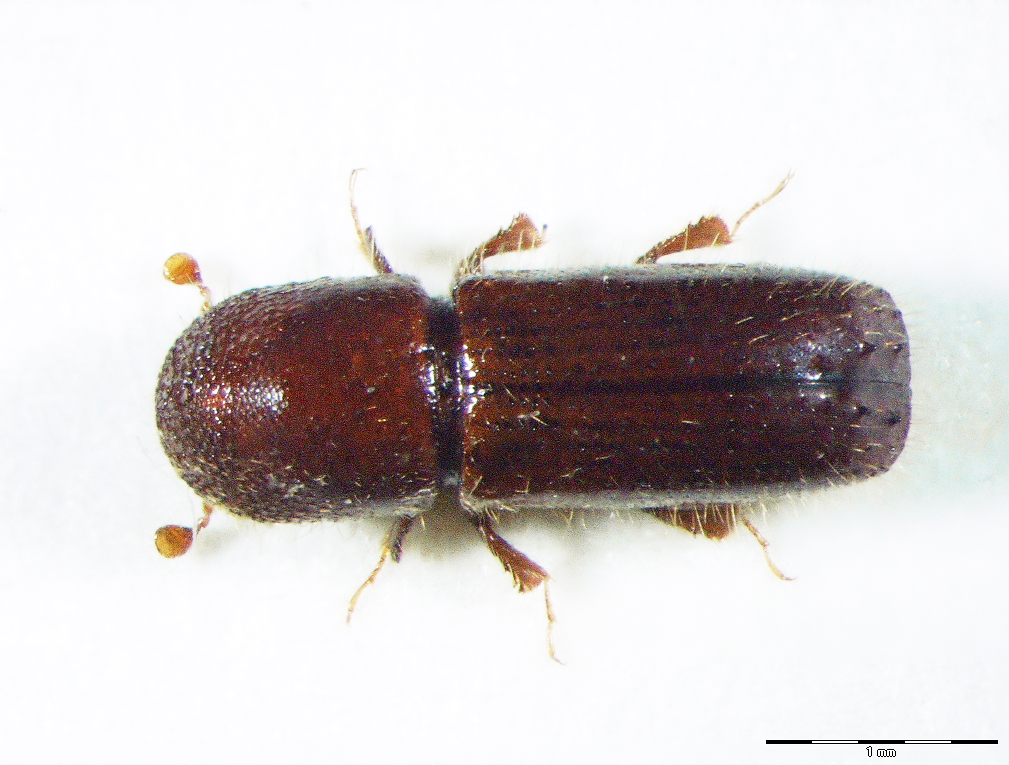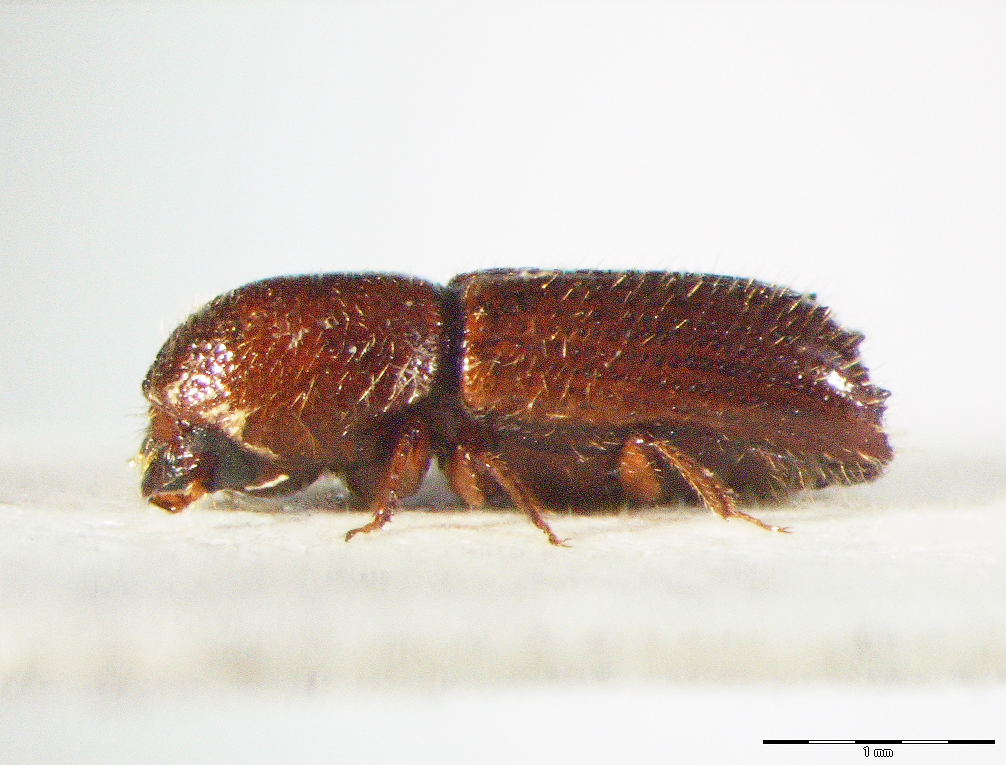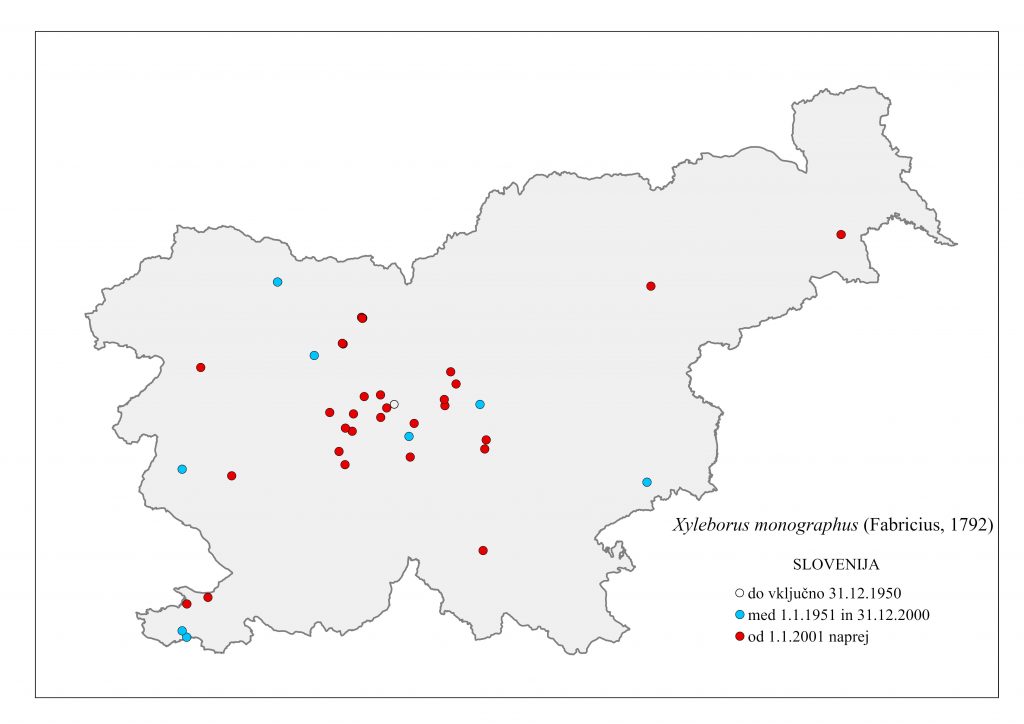37.04. Xyleborus monographus (Fabricius, 1792)
Presence
E: AB AL AU BE BU BY CR CZ DE EN FR GB GE GR HU IT LA LU MC NL NR NT PL PT RO SK SL SP ST SV SZ UK YU
N: AG MO
A: IQ SC TR
Figure 177: Xyleborus monographus, dorsal, lateral (Photo: Maja Jurc)
Older catalogs and keys – citations of name
Siegel 1866: Bostrychus monographus Fab.; Grüne 1979: Xyleborus monographus Fabricius, 1792; Freude, Harde, Lohse 1981: Xyleborus monographus Fabricius; Titovšek 1988: Xyleborus monographus (Fabricius); Pfeffer & Knížek 1993: X. monographus (Fabricius, 1792); Pfeffer 1995: X. monographus (Fabricius, 1792).
Figure 178: Xyleborus monographus, distribution map according to historical and recent data
Ecology and presence in Slovenia
The species is distributed in southern, central and eastern Europe, Ukraine, North Africa and Asia Minor. Siegel (1866) states that the species is “not rare in Carniola, in oaks”. It is common throughout Slovenia, with Koroška and Prekmurje the only regions without recorded presence (Figure 178). Hosts are Quercus canariensis, Q. castaneifolia, Q. cerris, Q. coccifera, Q. ilex, Q. lusitanica, Q. petraea, Q. pubescens, Q. robur and Q. suber. It also occurs less frequently on Acer spp., Fagus sylvatica, F. orientalis, Ulmus laevis, Ulmus spp., Carpinus betulus, Betula pendula, Juglans regia, Castanea sativa and Prunus avium. Most specimens were reportedly trapped, with Quercus petraea, Q. robur, and once Picea abies (hive) recorded as hosts. A xylomycetophagous species, it develops two generations annually, the first swarming in March and April, the second in June and July. The tunnel system is fork-shaped, with up to 12 cm long maternal galleries branching off from the 5-15 cm long radial entrance tunnel in different directions, lying approximately in the same plane. The tunnels penetrate deep into the heartwood. Males measure 2.0-2.5 mm in length, females 3.0-3.5 mm. The beetles are elongated and cylindrical. In both sexes, the apex is flattened and there are four large protrusions arranged in a square shape. In the male, the anterior margin of the neck shield is strongly convex. Males are 8.5 times less abundant than females in the population (Figure 177). X. monographus is an ambrosia beetle that only inhabits freshly felled timber and damaged standing trees. The species causes significant technical damage to oaks.



